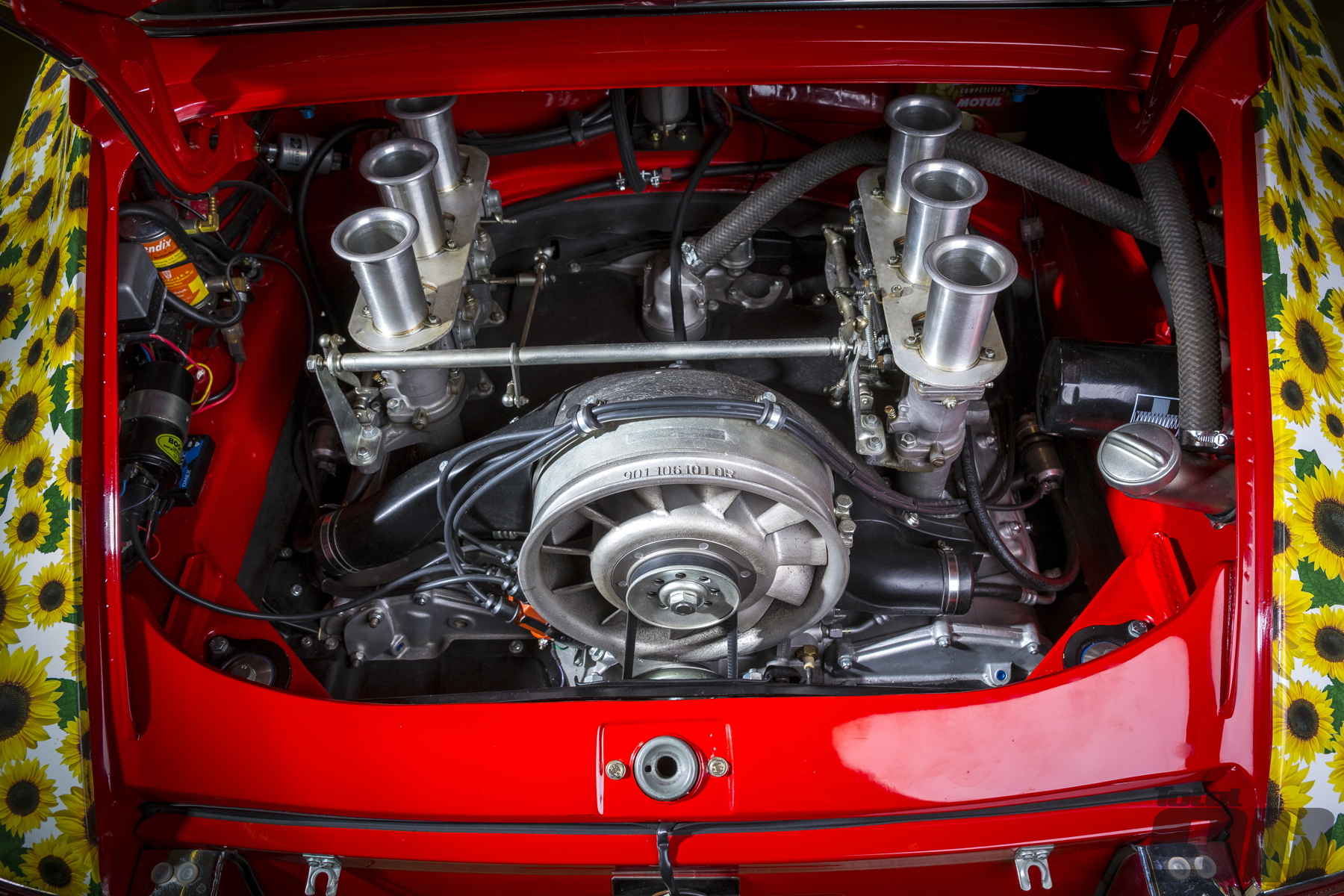Flat six engine: A Porsche 911 history
Originally an air-cooled 2.0-litre engine with Solex carburettors, the Porsche 911’s flat six engine got its first major revision in 1969 with the introduction of the B Series cars. With this came a switch to mechanical fuel injection on the 911E and flagship 911S models.
A year later and the three 911 models (T, E and S) had their capacity boosted to 2.2 litres before the last generation of pre-impact bumper cars were given 2.4-litre flat sixes in 1972 and 1973. On the last 911Ts bound for the US market, this also saw the introduction of a primitive electronic fuel injection system.
1973 also saw the debut of the 2.7-litre 911/83 engine (first used on the original 911 Carrera RS), a powerplant that would carry Porsche’s sports car range into the impact bumper era.
Two 3.0-litre flat sixes were launched in 1974 as well. One – a naturally aspirated unit – found its way into the back of that year’s updated 911 Carrera RS. The other began a new legend. Coupled to a KKK turbocharger, the new engine formed the heart of the Porsche 930.
While the naturally aspirated flat sixes eventually grew to 3.2 litres by 1984, in 1978 the Porsche 911 Turbo’s engine was enlarged to 3.3 litres and gained an intercooler, boosting power over the early 930 3.0s by 40bhp.
The 964 generation saw naturally aspirated models running a 3.6-litre flat six (eventually enlarged to 3,746cc for the 964 Carrera 3.8 RS) while the 964 Turbo initially debuted with the old 3.3-litre unit before the upgraded 3,600cc motor was introduced in 1993.
For the 993 Carrera and Carrera RS, the capacity remained the same though, in 1996, the innovative VarioRam induction system was fitted, improving the engines’ mid-range. The 993 Turbo also featured a ground-breaking flat six as it became the first twin turbocharged 911 (following the lead of the 959).
1998, of course, marked the biggest change to the Porsche 911’s flat six line-up as Zuffenhausen switched to water-cooling, bringing with it a new 3.4-litre engine for the Carrera, codenamed the M96.
Both the 996 Turbo and the new 996 GT3 utilised different architecture with what would became revered as the ‘Mezger’ engine sitting behind the rear wheels of each model.
Through the 996 and 997.1 generations, the Turbo and GT3 powerplant both remained at 3.6 litres all the way while the Carrera and Carrera S models used the mildly updated M97 engine on the latter generation.
However, for the Gen2 997, the GT3 and corresponding RS models were revised with 3.8-litre units, while the Turbo remained at 3,600cc but gained Variable Turbine Geometry. The latter made the switch to the direct fuel injection 9A1 engine, while the GT3s and RSs kept with the Mezger for one more generation.
After a final 4.0-litre flourish, the Mezger engine was phased out for the 991 GT3, replaced by a 3.8-litre 9A1-based flat six that can rev all the way to 9,000rpm. Meanwhile, the base 991 Carrera saw its engine downsized to 3.4 litres while the 991 Turbo and Turbo S were enlarged to 3,800cc.
As of October 2015 though, the biggest flat six shakeup since the switch to water-cooling has taken place at Zuffenhausen as the second generation 911 Carrera and Carrera S find themselves downsized to 3.0 litres apiece.
This however, is not the biggest change. That falls to the twin turbocharged layout that will feature on both cars as part of the switch to the new 9A2 engine design.
Naturally aspirated fans don’t have to fear too much though. Andreas Preuninger has reassuringly stated that the GT3 and RS models will continue to operate purely atmospherically, while the upcoming Porsche 991 R shows that there is life in naturally aspirated flat sixes yet.
For more historical online features, check out our full selection of ‘Porsche 911 history’ articles now.






Comments (0)